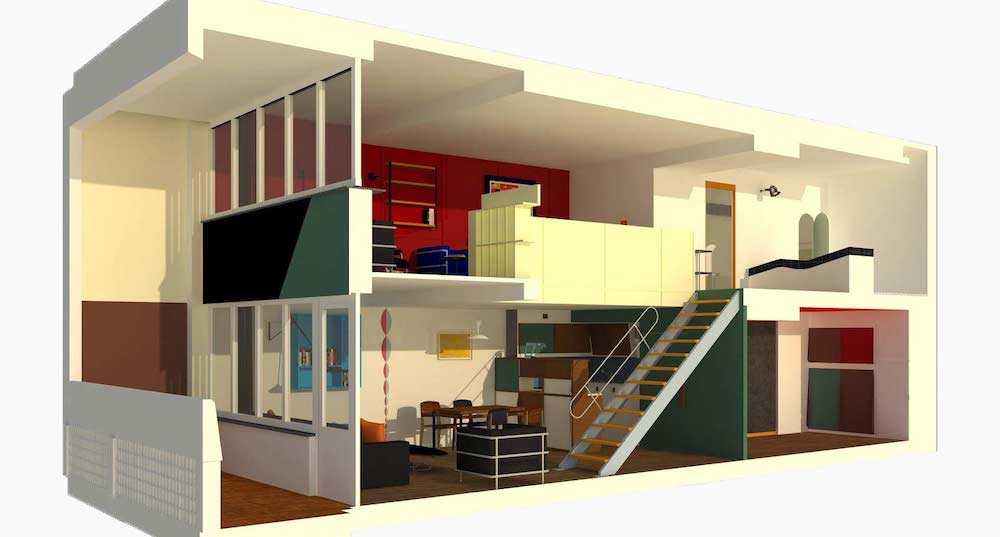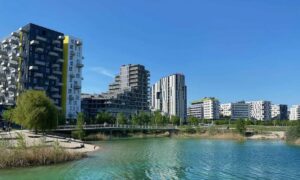(Editor’s note: This is Pt. 1 of a three-part series on buying a home in Berlin. You can jump to Pt. 2 here, and Pt. 3 here.)
I always wanted to live in a house. The whole of Berlin seems to live in rented places, mostly apartments, because houses are only prevalent in rural areas. We also rented an apartment when we first came here, but the rental prices made me cringe every time the payment went off our account. Also, the dream of a home was still there.
I actually don’t know where it came from. I don’t come from an affluent family; my parents always lived in a small apartment, a rental one, though in the end, they bought it out. It only had one bedroom; we, the two kids, occupied it, and our parents slept on the sofa in the living room. This was the way most of the families I knew lived. It was normal for post-Soviet countries.
My mom only got to sleep in a queen-sized bed when we grew up and went to another city to study at the university. She finally managed to turn our room into a bedroom for herself. When I see huge bedrooms and awesome, fluffy beds in American movies, I always think of my parents, who could neither have a big bed themselves before we left the house nor provide such a luxury for their two daughters. Then again, in some countries, people sleep 10 to a room and often with no bed at all, so who am I to complain?
Whatever the reason, though, I saw a house in my mind’s eye. I already knew that I wanted personal space for everyone living in it. I didn’t see many other details about this house, but I knew it was somewhere out there, waiting for me.
So whenever I thought I had an opportunity to finally start looking for it, I tried to grab it.
And so as soon as we settled in Germany, worked there for a few years to get permanent residence, and saved some (not much) money, I started persuading my husband that it was time to think of that house. After all, we already had a child, permanent residence, and stable job contracts. We were renting our second property in Berlin (the first one was an apartment, but after our child was born, we were lucky to find a great half-duplex), and it was getting to feel more and more like a pain to pay so much for something that won’t ever belong to you.
It was clear from the very beginning, though, that we would need a mortgage. And a big one.
Real estate prices in Berlin
Historically, Berlin was considered to be “cheap” in terms of real estate — cheaper than Munich or Frankfurt. However, it has seen a huge jump in these prices in recent years. According to Immowelt, purchase prices for apartments in Berlin have risen by 62 percent between the years 2017 and 2022. In 2022, a square meter in Berlin cost a median of 5,077 euros whereas in 2017 prices were still favorable, 3,129 euros per square meter.
Big real estate agencies post a lot of useful information on their websites, including the average prices, distribution by area, year-by-year increase, etc. The current price per square meter (sorry square feet folks, it’s Europe with the metric system) in Berlin is 6,395 euros, according to the website of Engel & Völkers, a huge real estate agency. But that doesn’t really tell you much, so let’s try to apply this information to something.
Let’s say I want a house of approximately 120–to–130 meters square (1,300–to–1,400 square feet). By American standards, this would probably be tiny (in 2022, the average square footage of a single-family home in the United States was 2,383 square feet). But for Europe, this is nothing to smirk at because the average size of a newly built house in Germany is 109 meters square (1,185 square feet).
So it’s actually a little above the average.
Just multiplying this by the average price, we find out that on average, one needs 767,000–to–831,000 euros to buy a house in Berlin. But what kind of house? Where? How many rooms? How old is it? Does it require renovation?
One of the main factors that define the price is, of course, the location.

We lived in Steglitz-Zehlendorf, one of the most expensive areas of Berlin, and ideally, would want to stay there. It is in the southwest of the city, very green, very quiet, very safe, very child-friendly.
And very, very expensive.
At almost 10,000 euros per square meter, the house price for 120–to-130 meters square house would jump to well over 1 million euros. This was an amount we could not even imagine, let alone get covered with a mortgage. Our initial calculations have shown that we can probably reach 700,000 euros, but that was already a big stretch: we only had about 100,000 euros saved after five years in Germany. What was definite is we could definitely go no higher than 700,000 euros.
So, we needed to either look into other Berlin areas, or outside of Berlin.

Maryna Kryvko
Maryna Kryvko is a software developer in Germany. Maryna also writes a programming blog to share her knowledge. She sometimes speaks at conferences, though being an introvert, writing comes more naturally. Maryna says she’s not a professional writer but writing is something she likes, “and I think I can do it pretty well.”














